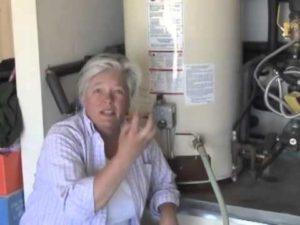Water Heater Maintenance For Dallas Homeowners
There are several easy and inexpensive ways to increase a water heater’s operating efficiency and longevity. Some things—adding insulation and setting the temperature—have to be done only once. Others, such as flushing the tank and checking the anode rod, should be done annually.
A water heater is important for your home, especially during the colder months. Water heaters frequently break down if not taken care of properly.
Water Heater Maintenance
Adjust the thermostat to 120 degrees. You’ll save up to 5% in energy costs for every 10 degrees you lower the temperature, plus you’ll reduce the risk of scalding.
Always maintain 2 feet of clearance around the appliance unless the manual specifically states otherwise.
Drain about a quarter of the tank a few times a year to remove sediment and debris. Turn off the cold water supply, hook up a garden hose to the drain valve, then run into a bucket until the water is clear. If the water remains cloudy, briefly open the water supply valve to stir up remaining sediment, and drain the tank again. This also makes the unit operate more quietly.
Annually test the temperature-pressure relief valve by quickly discharging it two or three times. Following the testing, keep an eye out for small leaks from the valve.
Insulate older units with a fiberglass jacket to improve efficiency, being careful to avoid contact with the flue (newer units already are insulated — check your owner’s manual to make sure). Also, insulate the hot and cold water pipes.
When leaving town, adjust the thermostat on gas heaters to “vacation” setting, which maintains the pilot light without heating the water.
Steps: How To Maintain Water Heater
Step 1: Locate Water Heater
First off, you need to know where your water heater is. This should be very simple. It should be located in your garage. Be careful! You are going to be dealing with gas/electricity and very hot water and steam.
Step 2: Determine if it’s Gas or Electric
This should be simple enough. Look at the tank itself and read any warnings and labels. If you can’t determine one sure fire indication is if there is a pilot light odds are its gas. Mine is gas operated.
Note: Read the instruction on the tank for turning off the gas and or electricity. Don’t just do it unless you know what you are doing.
Step 3: Locate Water Shut Off Valve, Pressure Release Valve, & Water Drain
The water shut off valve is located on the top of the water heater. It typically looks like the circular water valves used for front and back yards.
The pressure release valve is located on the top as well. It should have to label near it. There is piping that leads out of the water heater and into the wall. On the other side of the wall should the continuation of this piping. It is typically in the front yard or entryway. Make sure it is not obstructed. This is very important.
Step 4: Turn Off Heating Source and Gather Supplies
Now that you know where your water heater is and what it operates with (gas or electric) you are ready to perform its yearly maintenance. Be sure to turn off the gas to the water heater (if gas) or shut off the circuit breaker if electric. (Again, read instructions carefully.) I did this the night before. This saves the energy it takes to warm the water that you will soon be draining. No need to heat water you won’t be using. rel=”nofollow”more.
Benefits Of Maintaining Your Water Heater
The benefits of caring for your water heater are clear. Adding insulation reduces heat loss by up to 45 percent and can shave as much as 9 percent off water-heating costs. Flushing sediment from the tank improves efficiency and longevity. And making sure a viable anode rod hangs in the tank will help prevent its inside from rusting out. A used-up rod is far cheaper to replace than a new heater. Call (214) 238-8353 us for your home service and repair needs.
For more related articles and info visit https://www.berkeys.com/category/plumbing-articles/
